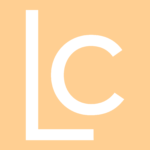Obesity surgery (bariatric surgery) through a Gastric Bypass is one of the most frequently performed surgeries in the world.
What is bariatric surgery?
Bariatric surgery is the most effective solution to combat obesity in our population, which has seen epidemic growth. This fact has been well documented in the media. It is estimated that in Europe alone there are around 160,000,000 patients, where around 1,500,000 are children. Discrimination prevails over obese people where self-esteem is at a very low level, leading to a lack of social engagement.
In a large proportion of these patients, both blood pressure and diabetes are altered, as well as other diseases that accompany them, meaning that family doctors and surgeons are increasingly subjected to greater pressure in an attempt to combat this problem, either surgically or non-surgically, by patients seeking long-term and effective weight loss. Surgical intervention is arguably the most effective and long-lasting form of treatment for morbid obesity.
What does a Gastric Bypass consist of?
A Gastric Bypass consists of dividing the stomach to obtain a smaller volume or reservoir.
After this division of the stomach, the small intestine divides to connect the small reservoir created to the intestine.
The main purpose of gastric bypass is to limit the amount of food a person can eat and reduce calorie absorption. As a result, the patient often experiences significant weight loss after surgery.
In addition to weight loss, gastric bypass can also help improve medical conditions related to obesity, such as type 2 diabetes, high blood pressure, sleep apnoea and heart disease.
However, it is important to highlight that a gastric bypass is a complex and irreversible procedure, which involves risks and requires an ongoing commitment to changes in lifestyle and diet after surgery.
Which physician performs the bariatric surgery of a Gastric Bypass?
Living Clinic’s bariatric surgery team is led by surgeon Dr. Luís Sá Vinhas.
Gastric Bypass: Before and After
Discover the case of Cristina, who lost 40kg after bariatric surgery through gastric bypass, and Elisangela, who lost 35kg with the same surgery.
Cristina

Elisangela

Schedule a consultation to hear the surgeon’s recommendation for your particular case and clarify all your doubts.
We are on Av. da Boavista, in Porto!




